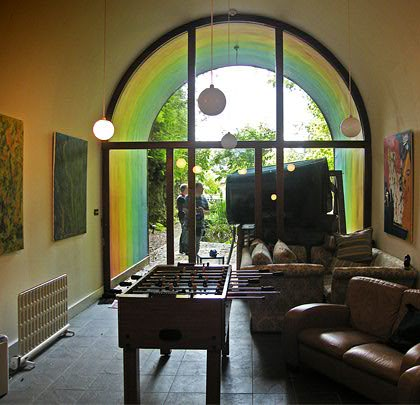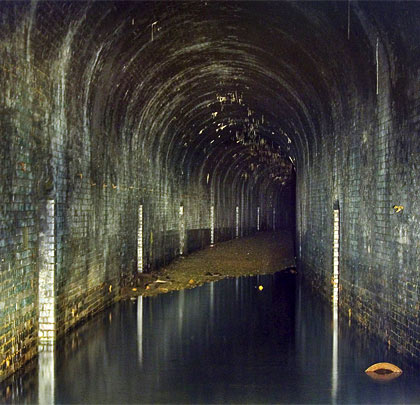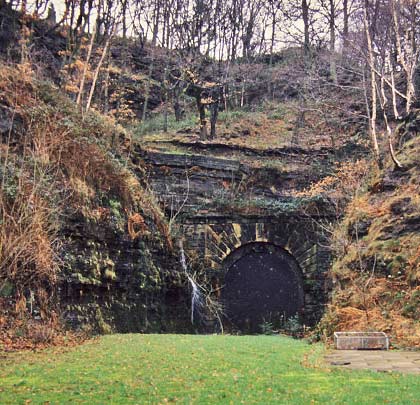Butternab Tunnel
Butternab Tunnel


















The Lancashire & Yorkshire’s 3½-mile branch to Meltham was authorised by an Act of Parliament in June 1861, but the work didn’t get underway until 4th April 1864. The first sod was lifted by Mr Charles Brook; Messrs Barnes and Beckett, the L&Y’s chosen contractors, took repsonsibility for the remainder.
Landslips made construction a protracted affair – the first goods train did not run until August 1868 – and the line was breached within weeks, delaying its opening to passenger traffic until Monday 5th July 1869. The single-track branch boasted three intermediate stations – Woodfield, Netherton and Healey House – although the former only survived for one month in the summer of 1874!
To the south of Dungeon Wood, the single line entered a lengthy cutting with stone retaining walls on its approach to Butternab Tunnel which curved to the west on a radius of around 20 chains. Trains emerged 256 yards later into a “spectacular gorge”, as one newspaper described it.
The portals are diminutive but distinctive, with the stonework of the headwall’s central portion radiating out from the centre rather than being in courses. Either side of the entrance at springing level are projecting quandrant-shaped stones; adjacent to these are buttresses. Below the parapet is a semicircular string course.
Judging by the secondary ring face visible at the portal, it would seem that the tunnel’s lining of engineering brick – five rings thick – was inserted at a later date, the original lining probably being stone. It can only be presumed that the district engineer was prompted to embank on such a potentially-disruptive course of work by considerable ground movement. Despite this, there is still some evidence of bulging today. The lining has regular refuges built into both sidewalls.
The gradient through the tunnel is 1:60, climbing to the south. Water penetration conspires with the blockwall to result in standing water at the north end. At the other, the former owner of the house now built on the trackbed constructed living accommodation in the tunnel, comprising a living/games area, kitchen and bedroom on a mezzanine level. Access into the tunnel is via a laundry room.
The Meltham branch’s passenger service was cut on 23rd May 1949 but goods trains continued to serve local businesses until April 1965. Around three-quarters of a mile of trackbed has been secured as a footpath known as the Meltham Greenway. The local council aspires to further extensions but these are complicated by development on the alignment and landowner issues, not to mention funding.







